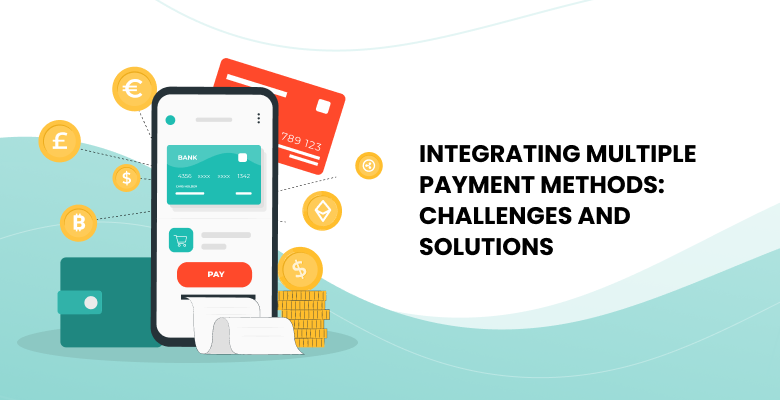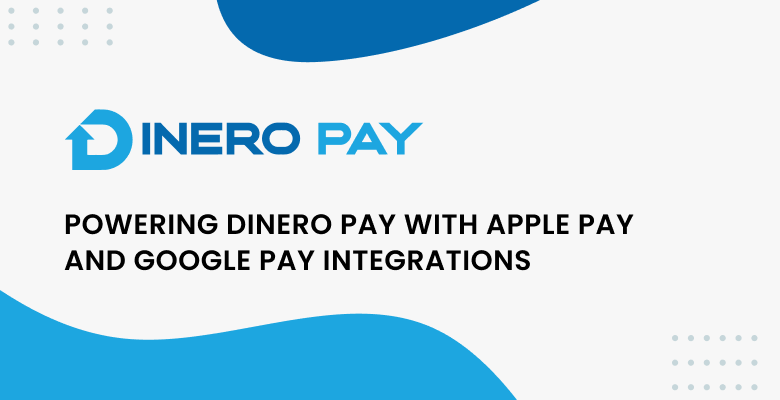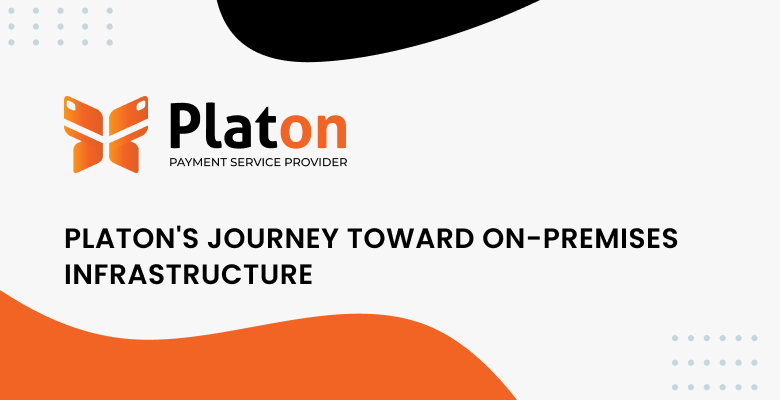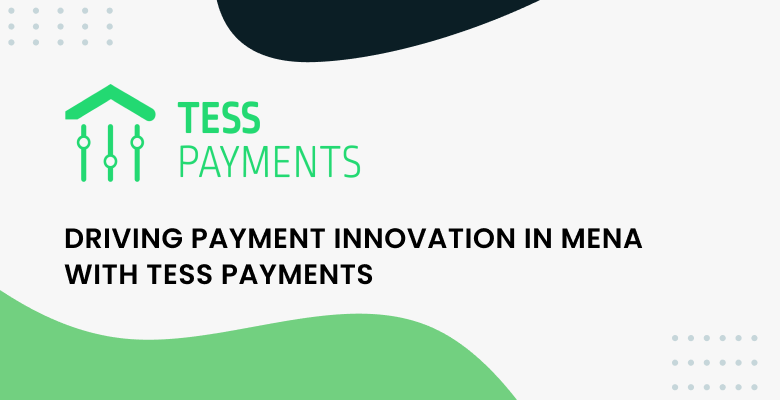
- Why Integrating Multiple Payment Methods Is So Challenging
- How Payment Orchestration Simplifies Multi‑Method Integration
- Cross-Functional Efficiency: Wins for Product, Development & Operations
- Use Cases: Manual Integration vs. Orchestration
- What to Consider Before Expanding Your Payment Stack
- The Final Word
- FAQ
Customers, from tech‑savvy millennials who prefer digital wallets to budget‑minded shoppers using the “Buy Now, Pay Later” approach, and corporate clients requiring bank transfers, demand choice at checkout.
As you expand into new regions and serve diverse customer segments, you need to broaden your payment method portfolio. Integrating multiple payment gateways one by one increases costs, delays launch timelines, fragments the checkout experience, and complicates financial reconciliation.
Want to avoid the same pitfalls in the process of integrating multiple payment methods or traditional cross-border payment setups? This article explains why multiple payment gateway integration often derails and how to prevent it with the help of a payment orchestration platform like Akurateco.
Integrating multiple payment methods allows businesses to support diverse regional payment preferences, such as Brazil’s PIX, India’s UPI, Kenya’s M‑PESA, or familiar options like credit cards, digital wallets, and BNPL (Buy Now, Pay Later) plans, resulting in higher approval rates and increased average order values. For customers, the use of payment APIs (Application Programming Interfaces) provides a unified checkout experience: they select from multiple payment gateways with no redirects, specific cross-border payment setup complications, extra forms, or verification steps.
As businesses embrace using multiple payment options, the complexity of their payment system grows. Engineers contending with disparate SDKs (Software Development Kits supplied by different payment method providers) for each provider and finance teams managing separate merchant account reports discover that integrating multiple gateways often introduces more friction than benefit.
Common challenges include:
- Lengthy launches. Each new gateway or APM (Alternative Payment Method) adds 3–6 weeks of development, testing, and certification.
- Disjointed checkout. Lack of a unified checkout experience lowers conversion.
- Reconciliation chaos. Separate merchant account reports drag out month‑end closes.
- Rising maintenance. Ongoing updates across PSP (Payment Service Provider) and APM management drive up support costs.
In the sections that follow, we’ll unpack the pros and cons of using multiple payment gateways, tackle the challenges of integrating multiple payment gateways, and reveal how a payments orchestration platform with a modular payment infrastructure and smart payment routing can turn the process of integrating multiple payment methods into a streamlined advantage.
Why Integrating Multiple Payment Methods Is So Challenging
Adding three or four methods sounds simple, yet many teams find that the process of integrating multiple payment methods can quickly derail timelines and resources.
While there are clear benefits to having multiple payment gateways, from wider regional reach to PSP approval rate improvement, the reality is a patchwork of SDKs and dashboards that slows time to market, strains operations, and undermines customer trust.
Technical Fragmentation
Each PSP or APM arrives with its own API quirks, versioning cycle, and developer guide. Engineering teams integrating multiple gateways must learn distinct authentication flows, update separate SDKs, and resolve conflicting endpoint behaviors. This payment method fragmentation not only delays launches but also spikes payment method maintenance costs by as much as 30 percent:
- Multiple SDKs require separate build pipelines and dependency management.
- Divergent API versions lead to 15 percent more build failures in CI/CD.
- Custom field mappings add 20 extra hours per integration for data normalization.
- Conflicting error codes make automated retry logic unreliable.
“This fragmentation can cripple smart payment routing, creating an average of 120 extra development hours per quarter and contributing to five critical API errors per release cycle, all before features reach QA.”
— Akurateco Integration Engineer
UX Inconsistency
Different providers mean different checkout flows, like hosted pages or embedded forms. Customers see broken flows when switching from a credit card to a BNPL and wallet integration, shattering the unified checkout experience and damaging trust.
- Hosted redirects interrupt session context, increasing drop‑off by around 12 percent or more (according to our clients’ experiences).
- SDK overlays vary in look and feel, reducing perceived brand consistency.
- Inconsistent 3‑D Secure flows trigger additional auth steps, which can drop approval rates by around 7 percent.
- Mobile vs desktop flows misalign can lead to an astonishing 25 percent higher abandonment on mobile.
“Any pause or reload in the checkout sequence creates a friction point that can cost thousands in abandoned carts.”
— Akurateco Integration Engineer
Reporting & Reconciliation Issues
Without a central hub, finance teams manage multiple merchant portals, CSV exports, and spreadsheets. Reconciling cross‑border payment setups and PSP and APM management across time zones adds days to the month‑end closes:
- Siloed dashboards force manual data merges, costing five days per close.
- Inconsistent currency formatting leads to reconciliation errors in about 8 percent of transactions, as witnessed by our team.
- Delayed settlement reports obscure cash‑flow planning by 48 hours.
- Fragmented logs prevent early detection of settlement failures.
“As our team’s accumulated experience suggests, a unified reconciliation interface can cut close time by 40 percent, reduce spreadsheet errors by 90 percent, and surface 30 percent more discrepancies before they impact cash flow.”
— Akurateco Integration Engineer
Compliance & Risk Management Overload
Each payment method requires its own compliance checks, e.g., PCI DSS for cards, PSD2 for European rails, SCA challenges for wallets, and KYC/AML rules in each market. Disparate systems lead to inconsistent fraud control across payment types, exposing gaps and leaving teams scrambling when regulations change. Here is what Akurateco’s team has encountered in our projects:
- Multiple rule engines mean 50 separate compliance tasks annually.
- Varied SCA triggers increase decline rates by 10 percent if misconfigured.
Local KYC requirements add two months of legal review per region. - Fragmented logs complicate audit trails and increase audit prep by 75 percent.
“A modular payment infrastructure with centralized compliance modules cuts audit effort by 50 percent and slashes region‑specific legal reviews from eight weeks to two.”
— Akurateco Integration Engineer
Operational Maintenance Over Time
APIs evolve: parameters deprecate, certificates expire, and endpoint URLs change. Maintaining half a dozen direct integrations consumes DevOps hours and inflates payment method maintenance costs because of the following dynamics:
- API version churn creates an average of three breaking changes per year per provider.
- Certificate expirations typically result in two hours of downtime on average if not automated.
- Integration test failures rise by 15 percent after each provider update.
- Resource turnover demands ongoing retraining on each API’s migration path.
“The benefits of payment orchestration abstract vendor updates behind one unified API, reducing maintenance effort by 50 percent and eliminating eight manual intervention points per integration.”
— Akurateco Integration Engineer
How Payment Orchestration Simplifies Multi‑Method Integration
A payments orchestration platform replaces the tangled process of integrating multiple payment methods with one central flow, which is the major power of payment orchestration approach.
By moving to a modular payment infrastructure, teams can add credit cards, digital wallets, BNPL, and local APMs through a single API in as little as 48 hours (if everything is executed correctly). The key features of a payments orchestration platform include:
- One API for All Payment Methods: A single integration covers credit cards, digital wallets, BNPL, and local APMs, removing the need for separate SDKs. For example, a retailer went live with both global cards (e.g. Visa and Mastercard) and regional wallets in just two days.
- Built‑in Routing Logic for Method‑Level Failover: Smart payment routing detects failures and reroutes transactions to backup providers, preserving the unified checkout experience, and rescued, for example, 18 percent of attempted orders during a peak sale for one of our clients.
- Combined Monitoring and Reporting: A single dashboard tracks transactions, declines, and error codes across all methods, eliminating multiple tools for PSP and APM management. One finance team we worked with cut reconciliation time by 50 percent after centralizing its reporting.
- Consistent UX Across All Methods: Cards, wallets, and BNPL and wallet integration share the same checkout flow, reducing abandonment by 12 percent. Previously, each method presented different form layouts and validation steps, confusing customers and causing drop‑offs.
- Centralized Compliance and Tokenization: One service handles PCI DSS, 3‑D Secure, and fraud control across payment types, lowering payment method maintenance costs and simplifying audits. As reported by Accurateco’s integration engineers, a payment provider saw 30 percent fewer audit findings after consolidating compliance in the orchestration layer.
Developers avoid unexpected failures when a provider updates its API because those changes sit behind the orchestration layer. Product teams can test new regional payment preferences or cross‑border payment setups in days instead of weeks, while operations staff monitor PSP approval rate improvement from a single view. This flexible payment architecture lets businesses introduce new methods without rebuilding checkout or backend systems.
CTA: Want to simplify multi-method integration with a future-proof approach? Contact us!
Cross-Functional Efficiency: Wins for Product, Development & Operations
When TESS Payments transitioned to Akurateco’s platform, every team noticed real improvements:
- Product teams streamlined vendor evaluation. Akurateco guided them through securing the Qatar Central Bank PSP license and onboarding to the SaaS platform. Once onboard, they activated global (MPGS) and local (NAPS, Doha Bank) connectors without writing custom code.
- Development teams moved all gateway integrations onto a modular payment infrastructure. They replaced separate codebases for each provider, freeing engineers to focus on new features instead of fixing connectors.
- Operations teams fully automated merchant onboarding and reconciliation. They swapped manual data gathering across portals for a single dashboard covering all payment providers, gaining clear insight into transaction flows and settlement statuses.
“Working with Akurateco removed the burden of separate integrations. We moved from vendor evaluation to full compliance and go‑live without juggling multiple backends.”
— Akurateco Payment System Integration Engineer
These cross‑functional wins illustrate how orchestrating the process of integrating multiple payment methods and multiple payment gateways on a single platform eliminates operational hassle and improves PSP approval rate across markets, all while using multiple payment options without extra steps.
Use Cases: Manual Integration vs. Orchestration
When teams tackle integrating multiple payment methods without orchestration, deadlines blur into the distance; user flows fragment, and maintenance budgets swell beyond reason. Three all‑too‑familiar patterns surface among Akurateco’s clients:
1. MENA PSP’s Mobile Wallet Rollout
- Scenario: A Saudi‑based PSP attempted to add Apple Pay, Google Pay, Tabby, and Tamara by hand.
- Pain points: Each multiple payment gateway integration required 3–4 weeks of development, separate compliance checks, and individual merchant account configurations.
- Result: Launch delayed by three months and fractured unified checkout experience, as customers faced different form flows for each wallet.
2. Independent Processor Expands Digital Wallet Support
- Scenario: An Azerbaijani payment processor aimed to offer Apple Pay and Google Pay alongside its existing card rails.
- Pain points: Building each wallet integration in‑house would have meant months of work—writing custom network tokenization, cryptogram validation, and decryption flows for each provider—and finance teams reconciling separate transaction logs from cards and wallets.
- Result: Choosing an orchestration layer replaced those costly builds, saving hundreds of thousands in development effort and simplifying end‑to‑end support for Apple Pay and Google Pay.
3. Legacy PSP Outgrows Single‑Provider Model
- Scenario: A Ukrainian PSP managing 3 million daily transactions outgrew its single‑PSP setup and needed to add five new acquirers and local rails.
- Pain points: Each provider demanded 6–8 weeks for endpoint integration, compliance testing, and custom SDK support. Product roadmaps stalled, and cross‑border payment setup slowed regional expansion.
- Result: Technical debt mounted as dev teams patched fragile code, and the flexible payment architecture they needed remained out of reach.
Across these scenarios, manual integration of multiple payment gateways paired with multiple payment methods chokes growth, fractures the unified checkout experience, and drives support costs skyward.
As highlighted in our 2025 trends in payment technology, orchestration, by contrast, offers a single touchpoint for cards, wallets, BNPL, and local APMs…centralizing merchant account and reconciliation data while sustaining PSP approval rate improvement without tearing down your backend.
What to Consider Before Expanding Your Payment Stack
Before embarking on the process of integrating multiple payment methods, take stock of your team’s capacity and your long‑term goals. Tackling the pros and cons of using multiple payment gateways without a clear plan can leave you grappling with delays, cost overruns, and poor user experiences.
“Teams that map out their payment architecture and simulate provider failovers before coding cut integration rework by 50 percent and save six‑figure sums in developer time.”
— Akurateco Payment System Integration Engineer
To avoid the majority of challenges of integrating multiple payment gateways, ask yourself:
How many new payment methods will you add in the next 12 months?
Assess the pros and cons of using multiple payment gateways before you begin. Adding a single new connector can take 3–4 weeks of development, and planning for more than three providers often sends integration timelines off course.
Are you selling in multiple regions or markets?
Expanding into LATAM or MENA brings unique compliance hurdles and regional payment preferences like PIX, OXXO, or M‑PESA. Successful teams map out cross‑border payment setup early to avoid repeated custom work.
Do you have the development bandwidth to support ongoing maintenance?
The process of integrating multiple payment methods demands constant updates—SDK version changes, API deprecations, new fraud rules. Without orchestration, payment method maintenance costs can climb by 30 percent as engineers chase breaking changes.
Can you track each method’s performance in a single view?
Fragmented dashboards hide spikes in declines or fraud. A unified reporting layer (rather than supporting separate PSP portals) lets you measure approval rates, dispute volumes, and error codes at a glance.
Have you defined your ideal checkout path?
Designing payment solution architecture up front ensures a consistent user journey across credit cards, digital wallets, and other popular payment options. Planning error handling, retry logic, and UI placement before coding prevents last‑minute rewrites.
The Final Word
Supporting multiple payment gateways should not saddle your team with technical debt, endless reconciliation tasks, or constant development overhead. By choosing a modular payment infrastructure or a flexible payment architecture, each new provider plugs into one orchestration layer.
Smart payment routing and a unified checkout experience become defaults, and you achieve lasting PSP approval rate improvement without tearing down your backend. In other words, the right orchestration platform converts the pains of multiple payment gateway integration into a growth engine.
Wondering if your payment stack is ready to scale? Talk to our team for a readiness review.
FAQ
- What’s the difference between adding a new payment method and optimizing existing ones?
Adding a payment method requires building connectors, updating SDKs, and handling reconciliation logic for each provider. Optimizing existing methods means refining your routing, fraud rules, and retry policies within one orchestration layer—no new integrations needed.
- How do payment method choices impact checkout conversion in different regions?
Local preferences (for example, PIX in Brazil or wallets in Southeast Asia) can lift conversion. Offering BNPL and wallet integration alongside cards ensures you match customer expectations and maintain a unified checkout experience.
- Do orchestration platforms replace PSPs or work alongside them?
They work alongside existing partners. Instead of swapping out your PSPs, orchestration lets you combine multiple payment gateways, centralize your merchant account reporting, and apply routing logic via a single API.
- How can I track which payment methods are underperforming without switching PSPs?
A unified dashboard aggregates approval rates, decline reasons, and settlement times for every provider. This visibility shows where to adjust rules or fallback to backups without rebuilding integrations.
- Can we prioritize payment methods by channel (mobile vs desktop vs in-app)?
Yes: an orchestration layer lets you set channel‑specific routing policies. You might prefer wallets in mobile apps, cards on desktop, or BNPL at checkout, all while keeping your codebase consistent and your checkout seamless.






